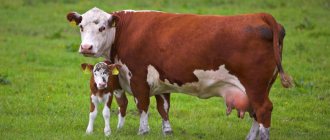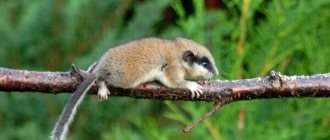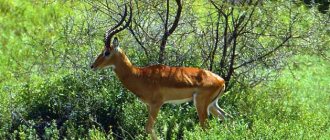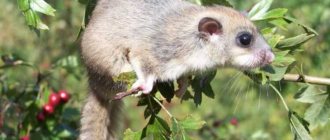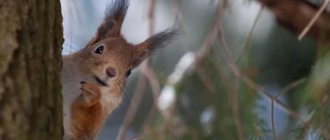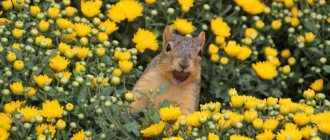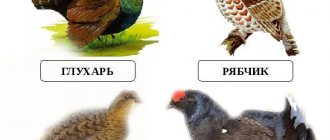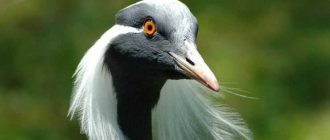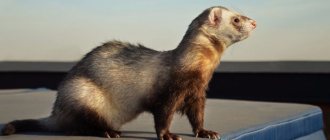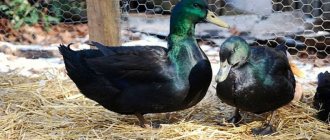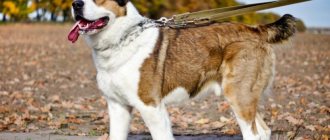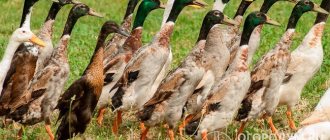The bird coot (lyska) or black loon is a waterfowl and belongs to the family called “coots”. It is included in the order of “cranes” and prefers to live near lakes and lowland rivers.
There is a distinctive feature in appearance: in the central part of the head above the beak there is a patch of skin without feathers. It merges with the beak, which has the same color. That's why the bird was called coot.
Appearance
Birds that belong to the coot species have black plumage. The leathery patch on the frontal part is colored differently in coots living in different parts of the world:
- European coots have a white spot;
- South American red-fronted coots - red spot;
- White-winged coots are a bright yellow spot.
The birds are small in size, their body length is about 40 cm. But among them there are those with a length of more than 60 centimeters (horned and giant coots).
The pelvis and legs are adapted for swimming and diving. Representatives of this species have soft and white feathers under their tails. The structure of the toes is peculiar: leaf-like blades are attached to them, which open during swimming. The color of the legs is yellowish or orange, the limbs are black, and the blades are almost white.
Coots have small wings; they fly little and mostly swim. But coots living in the northern regions make long flights.
Our country is inhabited by one representative of the species, called the common coot . It is gray or black, the breast and belly have a grayish-smoky tint, and the beak and spots are white. The body length of the common coot is only 38 centimeters, weight is one to one and a half kilograms. The eye color is bright red.
Coots have a dense build. Males are slightly larger than females and their feathers are darker and their frontal markings are larger in size. Young females are brownish in color with a light gray belly.
Gray-cheeked grebe
The gray-cheeked grebe belongs to the grebe family and reaches the size of an average duck. The grebe has a long neck and a straight, yellowish beak. It has a strong neck, the back of the head is decorated with a black crest. Its length is 40-50 cm, weight - 650-950 g.
Gray-cheeked grebe
External differences between females and males are manifested in the large preponderance of the latter. The neck and upper chest are reddish. The back of the cervical region, back and wings have brown-black plumage. The iris of the eye is brownish-red. It feeds on invertebrates, spiders and mollusks.
When deciding to breed black ducks, you should carefully study the properties of the breeds in order to make the right choice.
0 0 votes
Article rating
Where does it live?
Coots inhabit many areas of the globe. They can be seen:
- on the continent of Eurasia;
- in northern Africa;
- in Australia;
- in New Guinea;
- in America.
The vast area of the bird's range can be explained by the fact that long-distance flights are unacceptable for them. If they choose a place during the flight, they can stay there and do not return to their original place.
Steppe and forest-steppe zones were occupied by coots on Russian territory. Their places of settlement are reed and grass thickets near lakes and in the floodplains of slow-flowing rivers.
Types of coot
The rail family includes only eleven subspecies, called coots:
- crested;
- Hawaiian;
- ordinary;
- American;
- gigantic;
- yellow-billed;
- red-faced;
- Andean;
- West Indian;
- horned.
- white-winged.
There was another species called Mascarene coots. They lived on two islands in the Indian Ocean (Mauritius and Reunion). In the 18th century, this species disappeared due to the development and drying of swamps, as well as uncontrolled hunting.
Lifestyle
The coot is active during the daytime. Sometimes she stays awake during the night hours. But this happens only in the spring or during the migration period when making evening flights.
They are in the water almost all the time and are excellent swimmers. When a coot swims, it alternately extends and contracts its neck, shaking its head. The tail is submerged in water. It does not stay on land for long and moves slowly, trying to raise its paws higher. The coot mainly occupies a coastal hummock, where it cleans its feathers.
If a coot senses danger, it dives into a depth of about four meters or hides in thickets of grass and reeds.
The coot does not like to fly, but if the need arises to take off, it runs along the surface of the water (in length, moving about eight meters) and takes off sharply. Its flight is a little heavy and it is not able to maneuver, but its speed is sufficient.
The coot flies reluctantly and the bird very rarely comes to coastal land. Coming ashore, the coot usually finds a coastal hummock on which it tidies up its feathers. The bird feels most comfortable swimming in water, which is why it stays in it most of the time.
By nature, the coot is a very trusting bird and sometimes allows predators and hunters to get quite close to it, sometimes paying for this with its life. It has a largely peaceful character, but will fight for a tasty piece of food with ducks or swans living next door.
Coots make migratory flights in groups or individually. Having arrived at the territory for wintering, they unite in large flocks. The migration routes of coots do not have a specific pattern: they fly in constantly changing directions.
A large number of coot birds do not reach the lifespan intended by nature due to their naivety and the influence of external factors. Researchers have found that a coot can live a maximum of eighteen years.
Peculiarities
If among wild ducks with black plumage the most common is the coot, a representative of the rail family, then completely different birds are used in domestic breeding. They are characterized by a high rate of weight gain and are raised to produce valuable dietary meat. The black white-breasted duck is a breed bred by breeders. Unlike its wild white-billed brother, it has a much more massive body, strong legs and spends most of its time on land.
When breeding the black white-breasted duck, three varieties of poultry were used at once. Among the producers were Khaki Campbell, Ukrainian Gray and Pekna breeds. The following indicators are typical for an adult bird:
- early maturity - a weight of 2 kg is gained by the age of two months;
- reaching puberty at six months of age;
- adult bird weight up to 5 kg;
- egg production is in the region of 140-160 eggs, each of which weighs about 100 g.
The external characteristics of the black white-breasted duck are quite expressive. The large body is covered with black plumage, like the head; The drake has a green tint. The chest is snow-white, large, pronounced. The wings are long, the tail is short, and the legs are small. The beak and eyes are dark brown.
The agricultural purpose of the breed is not limited to meat production; poultry feathers are actively used in the production of bedding.
Nutrition
Coots prefer to eat plant foods. Their diet consists mostly of green algae. They feed on the following plants growing in water:
- duckweed;
- pinnate;
- hornwort;
- algae.
But sometimes they catch and eat small fish, insects, and fry. Coots destroy the homes of birds living in the neighborhood and eat eggs.
Reproduction
Coots form pairs that live together permanently. They are monogamous. After the flight, the coots begin their mating season. The formed pair undergoes constant mutual courtship and nest construction. It is built on the surface of the water in reed and reed thickets, and is made from grass stems and leaves. The construction of the nest is carried out jointly by the feathered family.
Black loon chick
The coot does not allow even fellow birds from its flock to approach its nest and fights with any intruder, protecting its territory. Nests are built at a distance of 30 to 60 meters. If an alien appears in the territory occupied by coots, they scream loudly, swim out to him, and drive him beyond its borders.
The female can lay eggs not once, but two or three times, in quantities from 6 to 13 pieces. The color of the eggs is sandy-gray or clayey. Small brown specks or purple-gray spots appear on the surface of the shell. The male and female incubate the eggs together. When the female leaves the nest to feed, the male replaces her.
After three weeks, the chicks hatch. They are fed by their parents for about two weeks. After two days, they are already able to leave the nest and swim with their father and mother.
During the period when coots breed, they hide from strangers and hide in the thickets. After about 2-2.5 months, the chicks begin to live independently. Sexual maturity in young birds occurs in the next season.
Basic content rules
The basic maintenance rules that a domestic duck requires to be observed include the following points.
- Mandatory provision of free range. There should be openings in the walls of the poultry house that allow the birds to leave the room at the right time.
- Forming a thick bedding, at least 15 cm, from hay or dry grass. Ducks need protection from frostbite.
- Mandatory arrangement of additional heating. The black white-breasted duck, like its other domesticated relatives, is afraid of drafts. The poultry house should be maintained at a comfortable temperature at all times.
- In the first two weeks of life, chicks need an atmospheric temperature in the range from +25 to +28 degrees. As they grow, temperature indicators return to normal - about +18.
A home-bred duckling must be provided with a special diet. In the first days of life, babies are fed a hard-boiled egg. From the third day, chicks are given low-fat cottage cheese and oatmeal; five-day-old ducklings are offered additional greens, and nine-day-old ducklings are given boiled potatoes. The feeding frequency is 5-6 times a day.
Meat white-breasted ducks should be fed primarily with grain crops: bran, additives in the form of fish meal, milk powder. Birds need salt, legumes, vitamin and mineral components. To create an optimal diet, it is recommended to use ready-made feeds with a balanced composition.
When keeping a black white-breasted duck in the summer, ducklings from three weeks of age can be walked in a pen covered with a canopy. For 5 heads of young animals there should be at least 1 sq. m area of space fenced with a grid. A one and a half month old bird can already be released into the water, while the volume of feeding with ready-made mixed feed is reduced, taking into account the possibility of obtaining natural nutrition.
Population
Coots are numerous. These birds reproduce quickly and easily get used to a new place. The existing species of coots are stable in number and are not subject to extinction.
There are factors in the world that influence population decline:
- reed cutting;
- drainage of reservoirs;
- hunting;
- ecology.
These reasons do not have a particular impact on the number of coots. Today, for many species there is no need to apply conservation measures. But some are under protection. For example, the Hawaiian coot.
How to choose?
When selecting black breeds of ducks for home rearing, you should pay attention to the productivity and characteristics of keeping the bird. Most wild individuals do not have a predisposition to domestication and gain weight poorly. For example, the most famous black coots are not of interest to farming precisely for this reason.
To obtain meat and eggs, breeds of the general use type are chosen. The meat sector is quite highly valued - the birds in it are characterized by rapid growth and active weight gain. If possible, you should give preference to black and white poultry raised at home or on a farm. When using wild, domesticated species or variants mixed with them, it is possible to obtain fairly highly productive offspring only if you work with mallard ducks.
Other black ducks are not of interest for breeding work.
Ducklings purchased for home breeding must be healthy, active, with uniform body fur. Any signs of deviation from the standard appearance are grounds for refusal to purchase breeding material.
Interesting Facts
1. Representatives of the coot species, which are called horned coots, to make a nest, throw a lot of pebbles into the water and create a nest on a hill formed from them. The stone island they created reaches a mass of up to 1500 kg.
Coots, called giant coots, build their nests on rafts that have a diameter of up to four meters. Such a raft can easily support a person weighing 75-80 kg.
2. The mating season is accompanied by games on the water. The female and male swim, moving towards each other, with loud cries, then, joining their wings, make synchronous movements. After this they disperse in opposite directions. At the end of the game, the couple unites and swims side by side.
3. When a situation involving danger is created, the coot protects itself as follows:
- jumps above the surface of the water;
- hits the water with great force with its paws and wings, causing splashes;
- stuns his enemy with powerful blows with his beak and paws.
It happens that the entire flock attacks the enemy and defends itself from him.
Habitat
The coot is considered a classic waterfowl that rarely goes onto land and even nests in shallow water. The black wild duck prefers slightly salted or fresh water bodies with a slight current, and for nesting it chooses areas with dense vegetation on the shore. Ducks live in lakes, lowland rivers, swamps, estuaries, sea bays and deltas. It is worth noting that wild ducks feel good near human habitation if they are not shot and fed. But they prefer to nest away from people.
Natural enemies of ducks are considered to be magpies and crows that steal eggs and chicks, marsh harrier, eagles, golden eagles and falcons. Nests can be destroyed by otters, minks, foxes, ferrets and weasels. The coot is well protected by water from predators that live on land. When attacked, the duck creates a lot of splashes and defends itself with its white beak and wings. The life expectancy of this breed in the wild is from 15 to 18 years.
